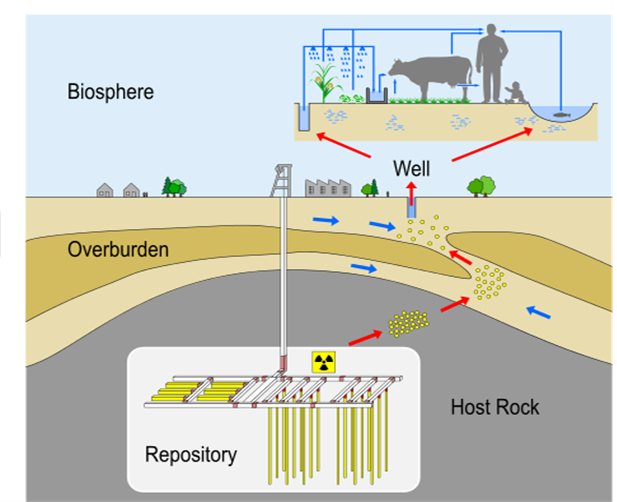The favored and internationally agreed concept for the disposal of heat generating radioactive waste is disposal in deep geologic formations. Because of the longevity of many radionuclides very long time frames up to one million years have to be considered for the assessment of the long-term safety of a repository. Further challenges are the large areas to be covered (several square kilometers with a depth up to nearly one kilometer) and the significant spatial heterogeneities, namely concerning mineralogical compositions and physico-chemical properties of solids and the aqueous phase. In a long-term safety assessment for any proposed radioactive waste repository the hazards associated with the facility are systematically analyzed. Computer codes are applied to describe the potential future evolution of the repository system including radionuclide release scenarios and therewith radionuclide transport through the geosphere (Fig.1). An important process retarding radionuclide migration is sorption on mineral surfaces, which is usually described by a simple distribution coefficient between the mineral and the water phase in a safety assessment. The objective of this research project is the development of a more sophisticated approach describing sorption based on mechanistic models regarding changes of geochemical conditions and mineral compositions where the resulting computational implementation should not significantly expand computing times. Therefore, the smart Kd concept is implemented into the flow and transport program d3f++. The PA code is especially designed for large model areas and very long time scales. The smart Kd values are based on mechanistic surface complexation models (SCM) and ion exchange (IEx), varying in time and space and depending on actual geochemical conditions, which might change in future e. g. due to the impact of climate changes. The concept developed and introduced here is based on a feasible treatment of the most relevant geochemical parameters in the transport code as well as on a matrix of smart Kd values (Concept).
Fig. 1 Schematic cross section illustrating radionuclide release scenarios with transport through the geological formations.
Contact: Dr. Ulrich Noseck, Prof. Dr. Vinzenz Brendler
